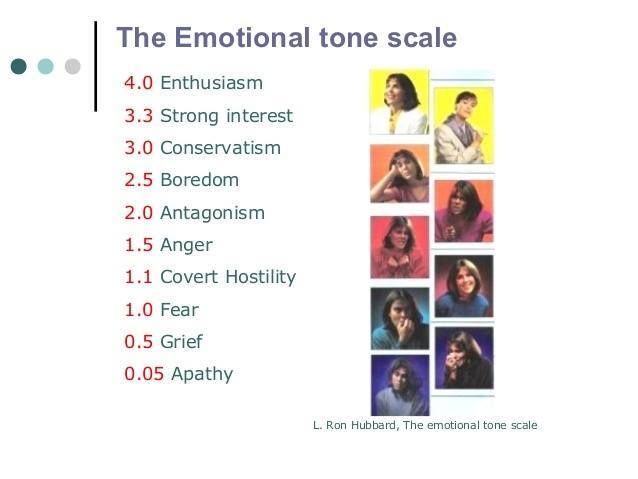According to its founder, L. Ron Hubbard, "Scientology is the science of knowing how to know answers" — and practicing Scientologists are convinced they know some pretty bizarre things to be true.

IN 1950, SCIENCE FICTION WRITER L. RON HUBBARD published Dianetics: The Modern Science of Mental Health, a book outlining his new system of psychotherapy. Within four years, the book ushered in a movement that expanded and became its own religion: the Church of Scientology.
Since then and especially in recent years, the church has been surrounded by controversy due to its questionable methods of coercion, which include stalking, blackmail, and kidnapping.
Such methods aside, the Church of Scientology has also elicited controversy for its interesting beliefs. Of course, no religion’s beliefs are wholly grounded in science and reason. That said, as the five following beliefs reveal, Scientology’s strangeness seems to be in a category of its own.
Scientology Beliefs: Xenu

Image Source: Wikimedia Commons
According to L. Ron Hubbard, Scientology’s fundamental creation myth goes something like this: Xenu (also referred to as Xemu) was once ruler of the Galactic Confederacy, an ancient organization of 76 planets. Having existed for 20 million years, the planets were struggling from extreme overpopulation.
Fearing he’d be thrown out of power, Xenu gathered billions of his people, froze them to capture their souls (“thetans”), and transported them to Earth (then called Teegeeack) for elimination. He dumped them at the bottom of volcanoes and then destroyed them in a series of nuclear explosions, killing all but a few and sending their souls into the air.
Once in the air, the souls were captured by Xenu, who then implanted into them misleading information, including concepts related to all of the world’s religions.
After all this evil was carried out, Xenu was eventually imprisoned, and Earth was left to be a mere prison planet by the Galactic Confederacy.
Scientologists are not permitted to learn this story until they have advanced well into the church’s ranks — and spent thousands of dollars to do so. Because of such value, the church will routinely deny the existence of this story to outsiders or even low-level church members.
Scientology Beliefs: Thetans And Auditing

An E-meter, a kind of primitive lie detector used by Scientologists to determine fact and uncover hidden truths during auditing sessions.
The frozen thetans of the Xenu story go on to play a huge role in Scientology beliefs. Each human has their own thetan and Scientologists strive to purify these spirits through “auditing” sessions until they reach a state of “clear.”
Auditing is one of the central practices of Scientology, in which practitioners are cleared of negative influences, called engrams, to heighten spiritual awareness and access untapped potential. The Church of Scientology has stated the procedure is 100% effective as long as it is done properly and the recipient is truly seeking change.
Happily for the Church of Scientology, auditing is also wildly expensive. It is estimated that reaching Clear costs about $128,000.
Operating Thetans

L. Ron Hubbard. Image Source: Wikimedia Commons
After becoming Clear and learning how to fully embrace and control the capabilities inherent in all thetans, the practitioner is now known as an Operating Thetan (OT). According to Scientology, OTs are not limited by physical form or the physical universe. According to the church itself: “OT is a state of spiritual awareness in which an individual is able to control themselves and their environment.”
From there, many OT levels exist, all of which promise increasingly awe-inspiring knowledge and powers, and which, of course, cost more and more money to attain. At OT level three, for example, practitioners are able to hear the Xenu story above.
Tone Scale

A portion of Scientology’s tone scale of human emotion. Image Source: SlideShare
According to official Scientology doctrine, reading and reacting to other people is key to being successful. While that’s not an outlandish statement, Scientology holds that most people are simply no good at connecting an apparent, outward emotion to its true inner emotion.
Created to “take the mystery out of human behavior,” the tone scale teaches Scientologists how to read people and provide the appropriate emotional response.
The tone scale runs from -40 to 40. The higher on the scale you are, the better. A score of 40 is described as “Serenity of Beingness.” A 1.1 is considered covert hostility (smiling on the outside while plotting inside) and describes someone who can’t be trusted. If you don’t believe in Scientology, you are a 1.1.
And because Scientology — like many other religions supposedly built on love and acceptance — employs homophobic doctrine, the tone scale also aligns with sexual orientation. If someone is gay, they automatically fall into the Covert Hostility category and can only move up into heterosexuality and spiritual elevation through auditing.
Humans Evolved From Clams

In L. Ron Hubbard’s book, Scientology: The History of Man, he goes into deep descriptions of incidents in our past lives. Because thetans are eternal entities, they have past lives that have experienced traumas throughout time. As a result, people today have subconscious memories of past lives as everything including clams, atoms, cells in the process of mitosis, early photosynthetic organisms, and sloths, just to name a few.
The clam, in particular, provides a great example. Hubbard argues that the hinges of the clam eventually became the hinges of the human jaw and that by invoking your clam past, you can have a very real effect on a human today. As Hubbard writes in Scientology: The History of Man:
Should you desire to confirm this, describe to some uninitiated person the death of a clam without saying what you are describing. ‘Can you imagine a clam sitting on the beach, opening and closing its shell very rapidly?’ (Make a motion with your thumb and forefinger of a rapid opening and closing).
The victim may grip his jaws with his hand and feel quite upset. He may even have to have a few teeth pulled: At the very least he will argue as to whether or not the shell stays open at the end or closed. And he will, with no hint of the death aspect of it, talk about the ‘poor clam’ and he will feel quite sad emotionally.
Hubbard later warns the reader that “discussion of these incidents with the uninitiated in Scientology can cause havoc. Should you describe the ‘clam’ to someone, you may restimulate it in him to the extent of causing severe jaw pain. One such victim, after hearing about a clam death, could not use his jaws for three days.”
Where did the clam come from, then? Some claim that the whole clam theory arose when Hubbard fed his son amphetamines, causing him to spout off endlessly about a number of things, including his past life as a clam.
Of course, many — if not all — Scientology beliefs seem like they could have originated in just that sort of way.
After reading about these weird Scientology beliefs, discover six interesting religions you’ve probably never heard of. Then, check out four bizarre origin stories about the Earth.





